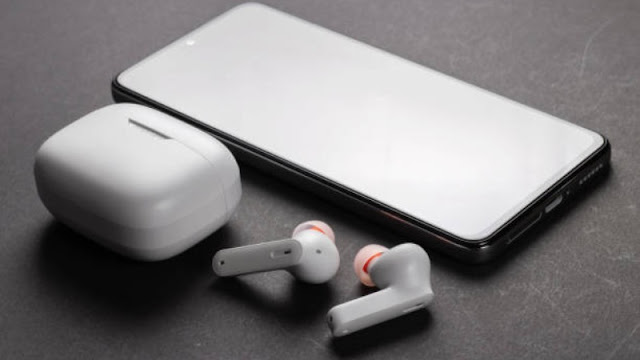The Evolution of Wireless Earbuds: Unleashing the Power of Portability and Sound

Introduction
In the ever-evolving landscape of consumer electronics, one
innovation that has significantly transformed the way we experience audio is
the advent of wireless earbuds. As we bid farewell to the constraints of
tangled wires, we welcome a new era of portability, convenience, and immersive
sound. This thing delves into the world of wireless earbuds, exploring their
evolution, technological advancements, and the impact they have had on our
daily lives. Read More: prohealthweb
I. The Genesis of Wireless Earbuds
A. Early Attempts and Challenges
The concept of wireless audio isn't entirely new, with early
attempts dating back to the late 19th century. However, it was only in the past
decade that significant strides were made in miniaturization and Bluetooth
technology, paving the way for truly wireless earbuds. Challenges such as
battery life, connectivity issues, and audio quality were initial stumbling
blocks that manufacturers had to overcome.
B. The Breakthrough with Bluetooth
Bluetooth technology emerged as the backbone of wireless
earbuds. The development of Bluetooth 4.0 and later versions played a crucial
role in ensuring stable connections and low energy consumption. This
breakthrough opened the floodgates for a myriad of wireless audio devices, with
earbuds taking center stage.
II. Technological Advancements in Wireless Earbuds
A. True Wireless Technology
The term "true wireless" refers to earbuds that
have no physical connection between them. This technology, coupled with
advancements in Bluetooth connectivity, marked a paradigm shift in user
experience. Users could now enjoy freedom of movement without being tethered to
a device.
B. Integration of AI and Smart Features
The integration of artificial intelligence (AI) brought
about a range of smart features in wireless earbuds. Voice assistants like Siri
and Google Assistant became accessible through earbuds, allowing users to
perform tasks hands-free. Additionally, AI-driven features such as adaptive
noise cancellation and personalized sound profiles enhanced the overall audio experience.
C. Battery Technology and Charging Solutions
Addressing the challenge of limited battery life,
manufacturers introduced innovative charging solutions. Wireless charging cases
became commonplace, allowing users to charge their earbuds on the go. Advancements
in battery technology also led to longer playtimes, making wireless earbuds a viable
option for extended use.
D. Water and Sweat Resistance
The demand for earbuds that can withstand various
environmental conditions, especially during workouts, led to the development of
water and sweat-resistant models. This not only increased the durability of
wireless earbuds but also expanded their range of applications.
III. The Impact on User Lifestyles
A. Redefining Portability
The elimination of wires marked a revolutionary moment for
portability. Wireless earbuds became an integral part of daily life, whether
commuting, exercising, or working. Their compact size and ease of use made them
a must-have accessory for individuals on the go.
B. Shaping the Fitness Landscape
Wireless earbuds found a natural fit in the fitness
industry. With the advent of water-resistant models and secure-fit designs,
they became the preferred choice for fitness enthusiasts. Features like heart
rate monitoring and workout tracking further solidified their place in the
fitness landscape.
C. Changing the Audio Consumption Habits
The convenience of wireless earbuds has reshaped how we
consume audio content. From streaming music during a morning jog to
participating in virtual meetings without the hassle of wires, wireless earbuds
have become synonymous with modern audio consumption.
IV. Future Trends and Challenges
A. Augmented Reality Integration
As technology advances, the integration of augmented reality
(AR) capabilities in wireless earbuds is on the horizon. This could redefine
how we experience audio by overlaying digital information onto the real world.
B. Health Monitoring Features
Wireless earbuds may evolve beyond audio devices,
incorporating health monitoring features such as temperature sensors and oxygen
saturation measurement. This could provide users with real-time health insights
during various activities.
C. Environmental Considerations
The removal of electronic waste is a growing concern.
Manufacturers are likely to focus on sustainability, developing earbuds with
eco-friendly materials and recycling programs to reduce their environmental
impact.
V. Conclusion
The journey of wireless earbuds from early prototypes to
mainstream accessories has been nothing short of remarkable. The convergence of
Bluetooth technology, AI integration, and advancements in design and materials
has propelled wireless earbuds into the forefront of audio innovation. As we
look ahead, the future promises even more exciting developments, reshaping the
way we interact with audio and technology in our daily lives. The evolution of
wireless earbuds is a testament to the relentless pursuit of convenience,
quality, and innovation in the world of consumer electronics.


